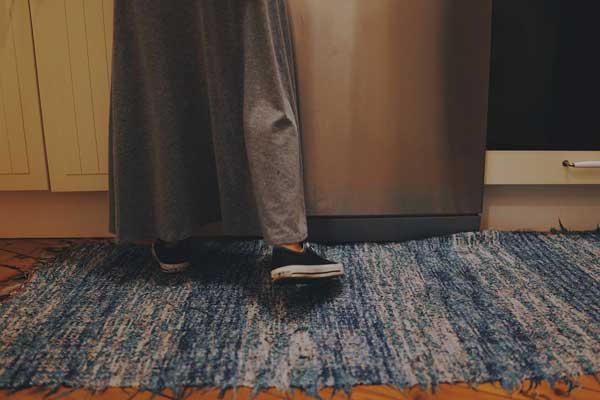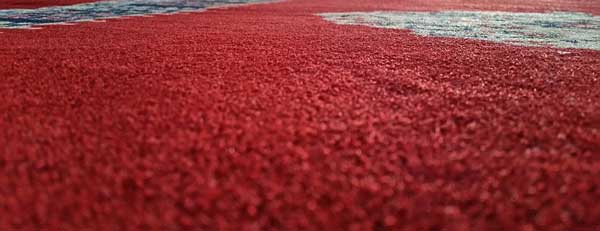How To Get Rid Of Moths In Oriental Rugs
Oriental rugs are costly, valuable, and they will make your home look classy.
There are many types of oriental rugs, such as Turkish rugs and Persian rugs.

What causes moths in carpets and rugs?
Moths can get into your home in several ways such as Open windows & doors, Pets, Mail delivery guys, and Moving items in and out from one storage place to the next.
Having moths in your rug does always signify lack of proper hygiene and cleaning practices below are some other reasons why moths stay in oriental rugs:
- Oriental rugs are made from natural fibers, which are a good source of nutrients for pests and moths.
- With time oriental rugs become drier due to the loss of natural oils, a state which makes it easier for pests to hide and eat their fibers.



What are the signs of carpet & rug moths?
Below are some of the ways you can tell when your oriental rug is infected with months:
- Color lightening or shedding
- Loosening of threads and loops
- Clumps, bumps, creases of dents on the rug
- Dark spots and marks
Pro Tip: Using a moth trap is one of the simplest ways to test if your home has moths. The pheromone vapor produced by the trap will cause the moths to stick at the bottom of the packet or container where the moth trap is put.
How to treat a moth infestation
Before we can look at some of the methods you can use to get rid of moths in oriental rugs, you need to understand the lifecycle of a moth to be able to choose the right solution.
The bad news is that moths produce at a high rate, which causes faster damage.
The cycle starts with two adult moths-a, female and male. After their mating, a female moth can lay 50 to 200 eggs. They lay those eggs in places with lots of food, and that is why you shall often find the moth in cloths and rugs with natural fibers, which is a good source of food.
From the eggs comes out the Larvae, also known as caterpillars, which take up to 10 days to gestate to the pupa stage and, finally, the adult stage.
With that level of multiplication, un-solved moth problems can easily result in a pest disaster in your home, resulting in ruined clothes, rugs, and carpets.
On the other hand, the good news is that once at the adult stage, moths live between one to two months before they die. The female month dies immediately after laying the eggs.
Therefore, getting rid of moths in rugs involves eliminating the adult moths, which you can see, the egg, and the larvae hidden on the rug fibers.




HOW TO GET RID OF MOTHS IN ORIENTAL RUGS IN TWO PHASES
PHASE ONE: USE MOTH REPELLENTS FOR DETERRING NEW INVADERS
Before we can think of removing adult moths and their eggs or larvae already on the rugs, let us start with a precautionary measure of mitigating the risk by reducing its spread and new developments.
Below is a list of 4 best moth repellents you can use:
The products above work through releasing strong smells, which will kill the moths if they inhale them. Therefore, the scent will act as a repellant, which discourages moths from getting into or living in your home longer than they should.
Pro Tip: You must be cautious when using mothballs because they pause some health risks to humans and pets. Mothballs are insecticides, which means the gas they release is toxic to humans, especially to children and the elderly, if it is very concentrated or used for more extended periods. Additionally, if improperly handled, children and pets can eat them, leading to serious health issues.



1. Mothballs & Moth Traps
Put them in a tightly sealed bag or container then place them at a strategic place in your home far away from children and pets.
The container must be properly closed to minimize the escape of poisonous gases into the atmosphere.
2. Cedar
Cedar comes in many forms: balls, cubes, hang-on boards, hanger rings, spray solutions, and sachets among others.
How you use it on your rug will depend on the type. For example, you can put the cedar spray into a Spray bottle then spray it on your rug from time to time.
Also, you can use the cedar hanger rings and boards to hand oriental rugs on your walls.
3. Essential oils
One easy method is soaking cotton balls with the oil then letting them to dry. Once they dry, you can place them on top of the rug directly or put them in a container then place them on a strategic position on your house.
Pro Tip: Be careful if your oriental rug is placed on hardwood floors because the oils can easily sip through, which can damage both your rug and floors. A good practice is the use of rug pads to protect both.
How to Make a Lavender Sachet month repellent at home
Gather the following items to make one Lavender moth repellent sachet:
- 1 oz. dried rosemary
- 1 oz. dried lavender
- One bay leaf
- Sachet bags
- Scoop
- Medium size bowl
- Put the rosemary, lavender and bay leaf into the bowl, and mix properly
- Scoop the mixture and put it into the sachet bag.
- Pull the drawstring of the sachet bag to lock all the ingredients inside tightly.
- Place the sachet in strategic places like inside cloth drawers or on top of rugs at night.
- Make sure you replace the sachet with a new one once it loses the smell after a few days or weeks.
If you prefer using a solution-based repellent, learn how to make a bug repellent spray in the video below:



PHASE TWO: PRACTICE THESE PROPER MAINTENANCE TIPS
1. Keep your rugs clean always
Indeed, dirt is not the only reason moths stay on rugs, but there is no argument that unclean rug creates a perfect environment for moths.
For example, the small food particles which get trapped in the rug fibers can easily attract moths into rugs.
Use these two guides to practice proper cleaning of your rugs:
You can also take your oriental rug to be officially cleaned by professionals at least three times a year to keep them safe.
Pro Tip: Apart from using a Vacuum cleaner, You can also use a leaf blower in corners, under furniture, behind the curtain, and other dark and hidden places to blast out the moths using air.

2. Add some light
The perfect environment for moths is in dark places. Switching on the bulbs, lampshades, or opening windows to daylight can add more light to your home.
Pro Tip: Salt Lamp is a natural source of lighting with additional benefits, such as air purification and reduction of excess light.



3. Apply some Traffic & Tension regularly
Moths only stay in secluded places with low foot traffic and movement.
Moths cannot survive in high foot traffic places because people will step on them and kill them.
If your rug is under furniture where there is less movement, rotate the rug daily to create that disturbance in the environment to discourage the moths.
4. Use some Heat
High heat will often destroy most natural fibers’ rugs. Therefore, be careful when using this method.
A steam iron can effectively complete this task for you.
The heat, of course, will kill Larvae or eggs hidden on the rug’s pile and fibers.
Pro tip: You can also take the rug out to the sun or a regular basis. Place the rug upside down to avoid exposing its top side to too much heat.
5. Keep your rugs dry
Moths love damp places with little or no air circulation. You can prevent these in several ways like the following;
- If you notice mold or mildew smells on your rugs, using proper methods to eliminate them immediately.
- Buy a humidifier if the humidity of your house is too low.
- Use fans during shower time to increase air circulation.
6. Look Further
The moths might not go to your rugs directly. Instead, they might take host at other places in your home before moving to the rug.
Below are some common areas to look:
- Wall hangings & Tapestries
- Same color items. Most moth larvae tend to mimic the color of the material where they hide in.
















